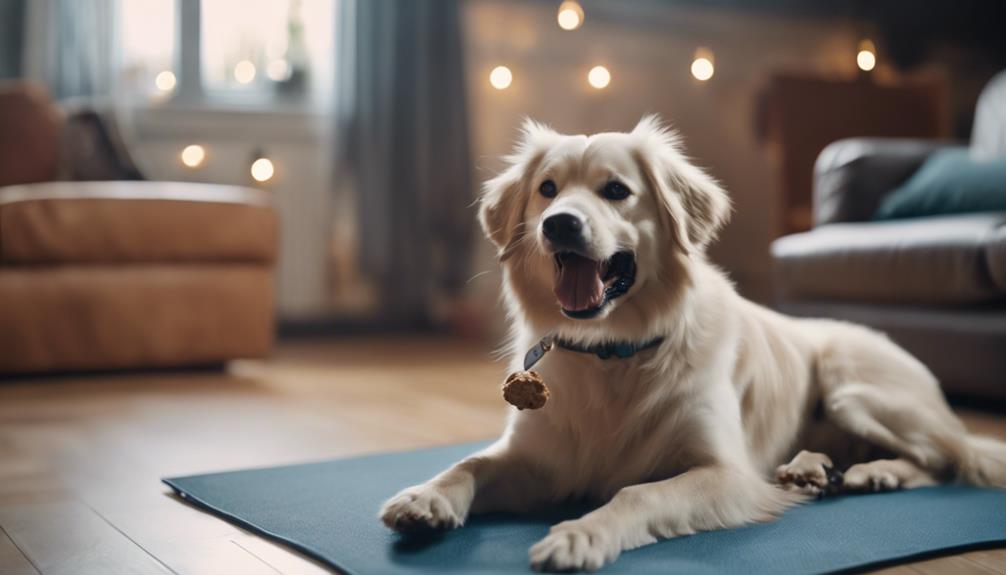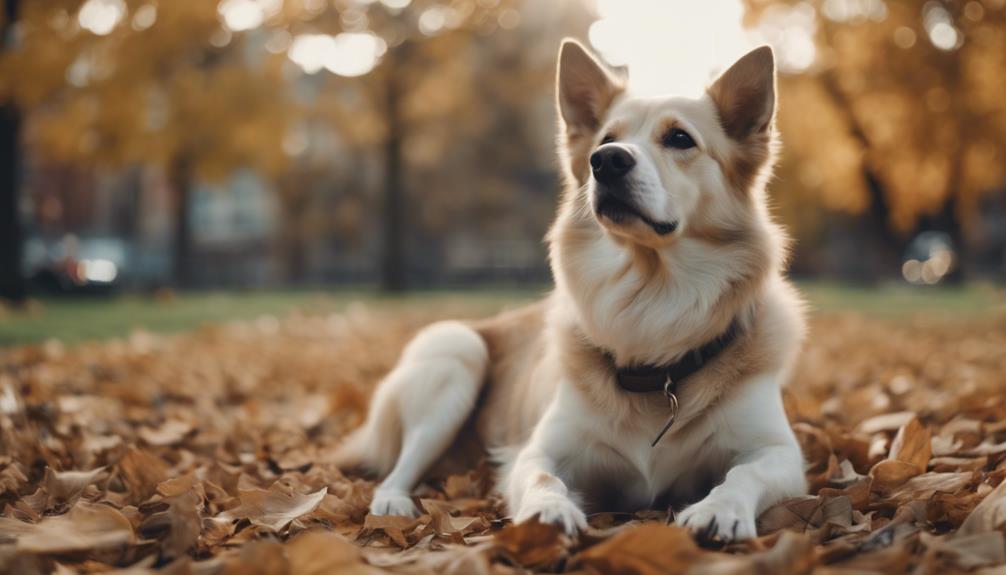Understanding the intricacies of teaching a dog to stay through positive reinforcement is a pivotal aspect of effective canine training. By implementing a systematic approach that emphasizes rewards, consistency, and gradual progression, dog owners can lay a solid groundwork for instilling this crucial command in their furry companions.
As we delve into the nuances of positive reinforcement techniques tailored for teaching the stay command, we will explore key strategies and methods that promote not only obedience but also strengthen the bond between dogs and their owners.
Key Takeaways
- Establish clear outcome and steps for training stay.
- Use high-value reinforcers to motivate the dog.
- Gradually increase duration of stay training.
- Consistency, patience, and positive reinforcement are essential.
Visualizing the Stay Exercise
In visualizing the stay exercise, it is essential to establish a clear understanding of the desired outcome and the steps involved in training a dog to stay using positive reinforcement. The goal is to teach the dog to remain in a specific position until released, promoting impulse control and obedience.
To achieve this, start by selecting a high-value reinforcer that motivates your dog, such as treats like hotdogs or cheese. Next, establish a marker, like a clicker or a specific word, to pinpoint the exact moment of desired behavior. Begin training by reinforcing the dog for staying in place, gradually increasing duration, distance, and distractions.
Consistency, patience, and positive reinforcement are key elements in successfully teaching a dog to stay.
Practicing Stay in Different Environments
Practicing the Stay command in various environments enhances a dog's ability to generalize the behavior across different settings and situations.
Start by practicing in a familiar, distraction-free space before gradually progressing to more challenging locations. Begin with short durations and slowly increase the time as your dog becomes more proficient.
Introduce different environments like parks, busy streets, or crowded areas to help your dog learn to stay despite various distractions. Consistency is key in reinforcing the Stay command in different places to ensure your dog understands that the behavior is expected regardless of the surroundings.
Troubleshooting Common Stay Challenges

When encountering challenges while teaching a dog to stay, it is essential to address common issues promptly and effectively.
One common challenge is a lack of focus or attention from the dog. This can be addressed by working on building your dog's focus through engaging training sessions and gradually increasing the duration of the stay.
Another challenge is the dog breaking the stay position prematurely. To tackle this, reinforce the stay behavior in shorter intervals initially, gradually increasing the duration as the dog becomes more reliable.
Additionally, distractions in the environment can cause difficulties with staying. To overcome this, start training in a quiet environment and gradually introduce distractions to help your dog learn to stay focused despite external stimuli.
Incorporating Stay Into Daily Routines
Incorporating the stay command into your daily routines can greatly enhance your dog's obedience and overall behavior. Consistency is key when integrating stay into your daily activities.
Start by incorporating short stays during regular interactions with your dog, such as meal times, walks, or play sessions. For example, ask your dog to stay before feeding them or crossing the street during a walk. By making stay a part of your everyday interactions, your dog will learn to generalize the command across various situations.
This consistent practice reinforces the behavior and helps your dog understand that staying in place is expected in different scenarios. Remember to use positive reinforcement, such as treats or praise, to reward your dog for successfully staying in position.
Advancing Stay Skills With Distractions

To enhance your dog's ability to stay amidst distractions, progressively introduce varying levels of environmental stimuli during training sessions. This method helps solidify the stay command in different situations and environments.
Here are four key strategies to advance your dog's stay skills with distractions:
- Start Small: Begin by introducing mild distractions, such as gentle sounds or slight movements, to test your dog's focus.
- Gradually Increase Distractions: Slowly incorporate more challenging distractions, like toys rolling by or people walking past, to build your dog's resilience.
- Reward Success: Praise and reward your dog generously when they maintain their stay despite distractions to reinforce the desired behavior.
- Practice Consistently: Regularly practice staying with distractions to help your dog generalize the skill across various scenarios.
Celebrating Success and Progress
Upon achieving milestones in your dog's training journey, it is essential to acknowledge and commemorate their progress with meaningful gestures. Celebrating success and progress reinforces positive behavior and strengthens the bond between you and your dog.
When your dog successfully stays in place for an extended period or resists distractions, celebrate by offering verbal praise, giving extra treats, or engaging in a favorite activity together. These celebrations serve as positive reinforcement, motivating your dog to continue excelling in their training.
Consistency in acknowledging achievements helps shape desired behaviors and encourages your dog to strive for more. Remember, each small step forward is significant, so be sure to celebrate every win along the way to a well-trained and happy pup.
Conclusion
In conclusion, teaching a dog to stay using positive reinforcement techniques is a foundational aspect of obedience training that can enhance the bond between dog and owner.
By following a structured guide and consistently reinforcing desired behaviors, dog owners can cultivate a strong foundation for the stay command.
With patience, practice, and positive reinforcement, dogs can learn to stay in various environments and situations, leading to a harmonious relationship based on trust and communication.




